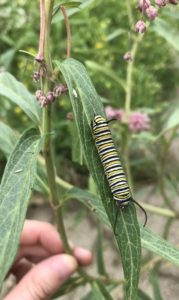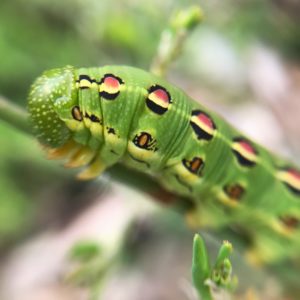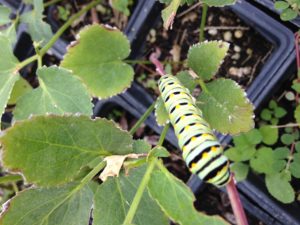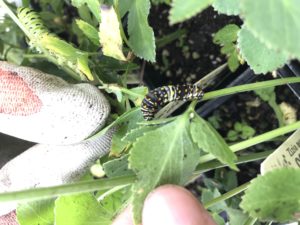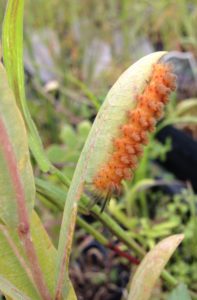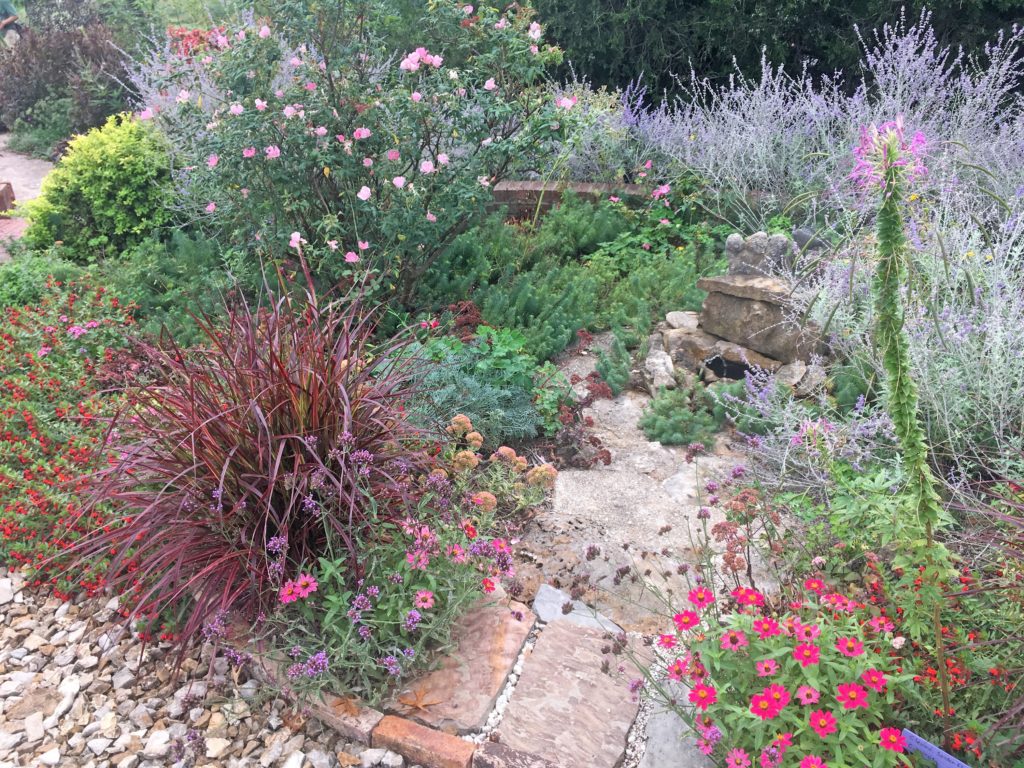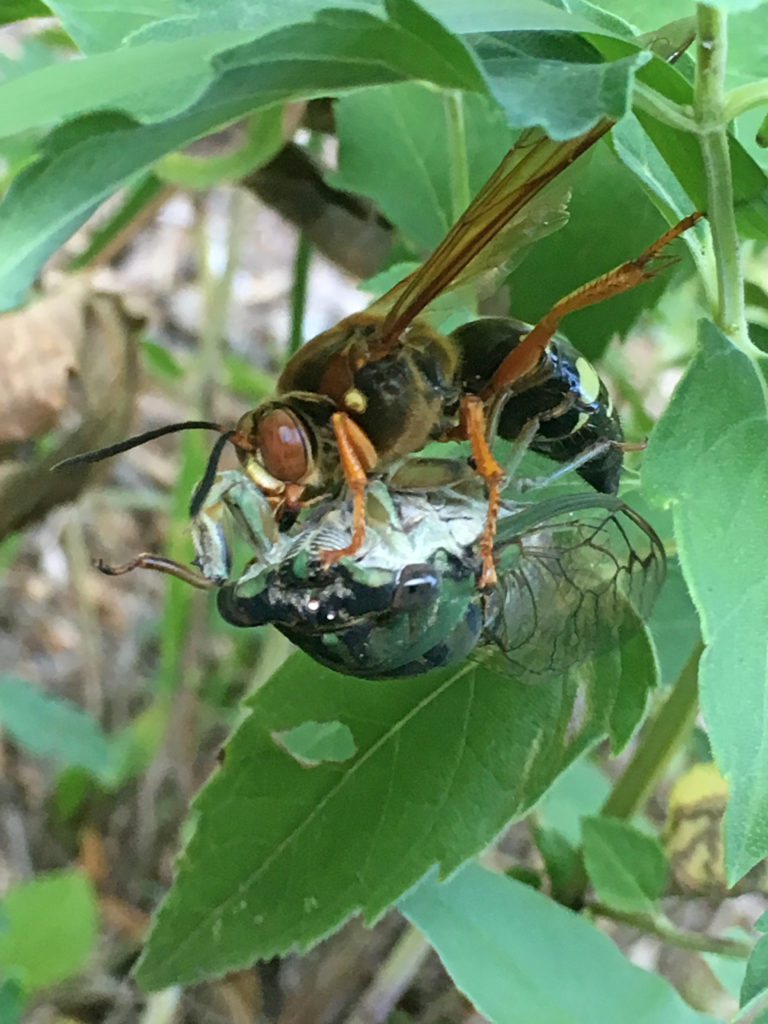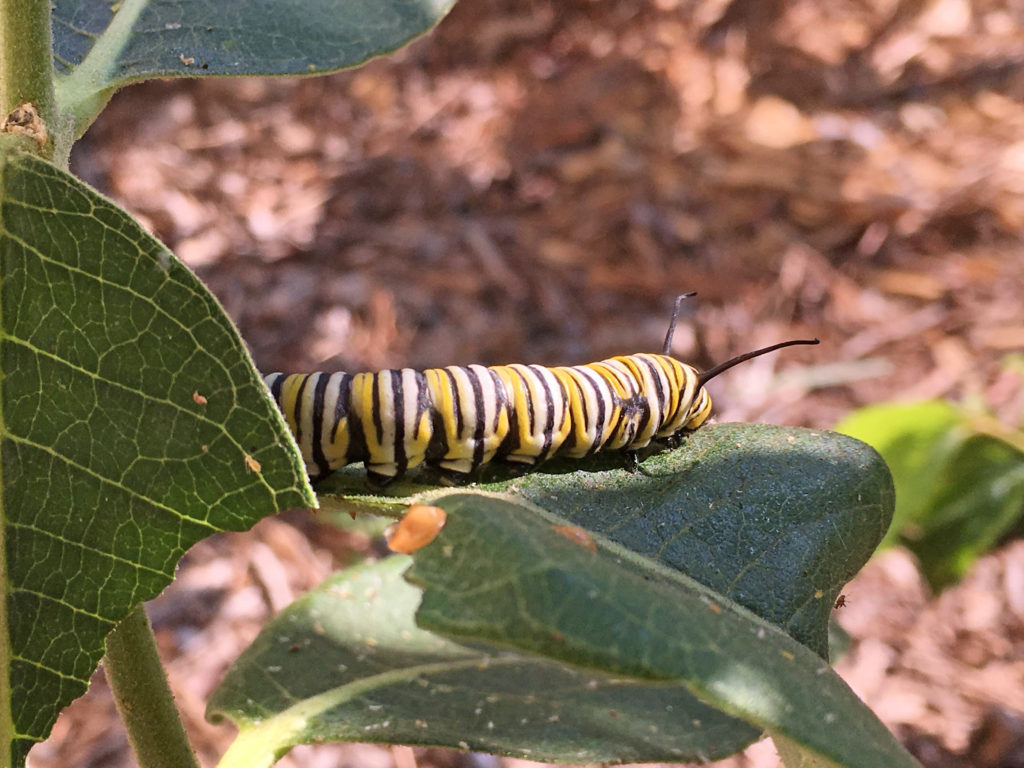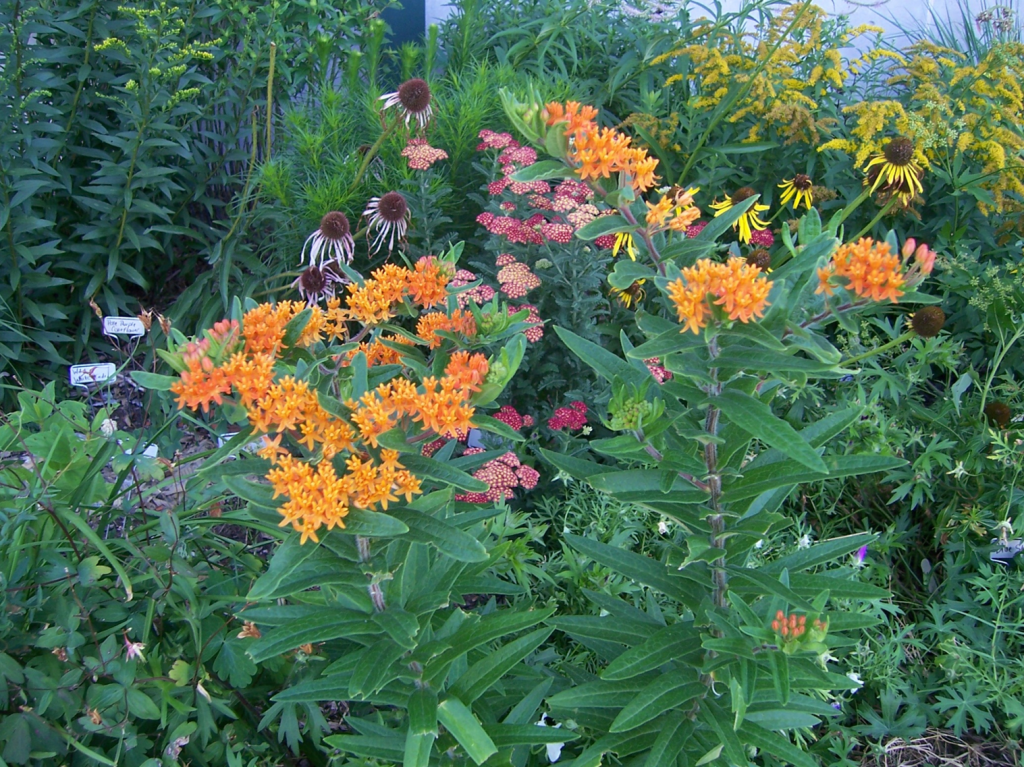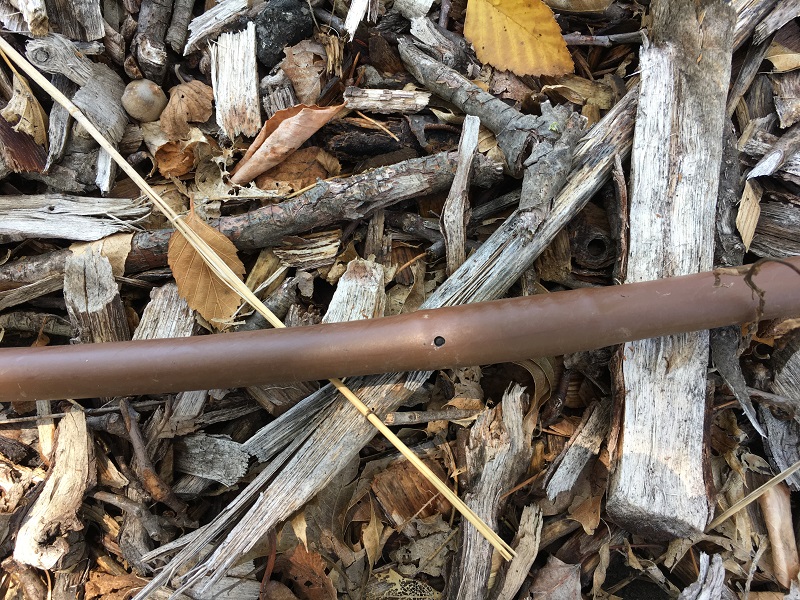Part II of my blog series about caterpillars will cover their bodies and behaviors, and the habitats you can build for them at home.
Anatomy
Once you look closely, you can easily see that caterpillars are more than just a pudgy worm. They often have visible faces, charismatic coloration and interesting behaviors. Caterpillars are actually six legged creatures (because, of course, they are insects!), though it looks like they have many more. The six real legs are located at the front of the body near the head. All other legs are considered ‘prolegs’; appendages for gripping, and moving, but not true jointed legs.
Some caterpillars seem to have horns or antennas visible on their heads, but you are actually seeing tentacles. Most caterpillar antennae are very small and inconspicuous, located near the mouth, while tentacles are large, fleshy and can occur in several places along the top of the body. Tentacles on the head help them sense the world around them while tubercules (fleshy knobs along the body) are usually for intimidating predators.
You may have questioned at one time or another how caterpillars ‘breathe’, or if they do at all! In fact, insects breathe through holes in their bodies called ‘spiracles’. These tiny openings (found along the sides of most caterpillars) bring air into the trachea of the insects and usually deliver oxygen directly to the body tissues.
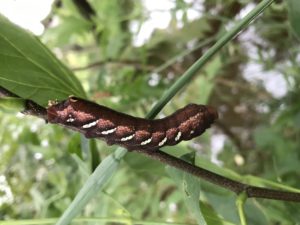
A white-lined sphinx moth (Hyles lineata) caterpillar blending in with a rusty brown redbud stem. As long as my finger at least, this is one huge caterpillar!
Dude with a ‘Tude
When you are such a delicious and nutritious snack for birds, it pays to defend yourself and stay hidden! In the last post I discussed defense mechanisms such as special coloration, camouflage or toxic setae (hairs). But sometimes their defenses have much more attitude! For instance, swallowtail caterpillars are famous for their charismatic show of osmetrium, a forked organ that shoots out suddenly to startle predators. When threatened, the caterpillar quickly extends the osmetrium to scare the offending spider, bird, or ant. A great video of this reaction is found here. The organ resembles a snake tongue or tiny horns and can secrete unpleasant odors to further repel a would-be predator.
Flinging Frass
Caterpillars with osmetrium purposely produce unpleasant odors to scare predators, while other butterfly larvae take drastic measures not to produce an odor. Silver-spotted skipper caterpillars are famous for their ability to fling their frass (the fancy word for caterpillar poop) incredible distances. Scientists believe this helps keep predators such as wasps from detecting where the caterpillar is living. To be sure no predator finds their cozy home, a tiny skipper caterpillar can shoot their turds up to 5 feet away! That’s about 30 times their body length. They accomplish this feat through a controlled burst of high blood pressure.
You have to see it to believe it — https://www.youtube.com/watch?v=WW5j7eY15Yw
Silk
Caterpillars have amazing organs called ‘spinnerets’ that produce silk. We know that silkworms are bred especially for their prolific silk production, but many of the caterpillars in your very own backyards also make silk. Some caterpillars use silk to escape predators by attaching it to a leaf and ‘bungee jumping’ to safety. They also use it to make mats or trails around the plant they live on to make travel easier. Some caterpillars will make elaborate tents or ‘bags’ out of silk, with hundreds of their kin inside with them. And when it comes time to mature into a butterfly, a silk ‘button’ helps the chrysalis hang from a leaf or twig. Moths make their entire cocoon out of silk, surrounding themselves in a soft yet protective barrier.
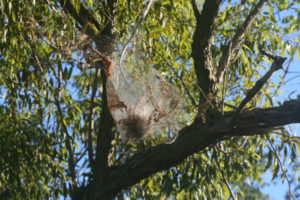
The fall webworm (Hyphantria cunea) is a well known but harmless pest. Characterized by a large sticky silk nest and a voracious appetite, they rarely cause lasting damage to otherwise healthy trees. By Alison Hunter [CC BY-SA 2.5 (https://creativecommons.org/licenses/by-sa/2.5)], from Wikimedia Commons
Habitat
Regular visits to the Arboretum will provide ample bug-watching opportunities, and our staff are eager to chat with you. But the best way to learn about insects is to see them in person. Plant a native garden of your own where insects can thrive! Lots of wonderful resources exist about butterfly gardening, but remember: it isn’t a butterfly garden unless it includes host plants. They need host plants (the specific plants the larvae feed on) and native nectar to sustain their entire life cycle. Otherwise, as Lenora Larson might say, you are just “bartending”, serving only “adult beverages” to the butterflies but not supporting the larvae. If you need some inspiration to create your own native garden paradise for butterflies and moths, talk with one of our staff members at the upcoming FloraKansas Native Plant Festival!

